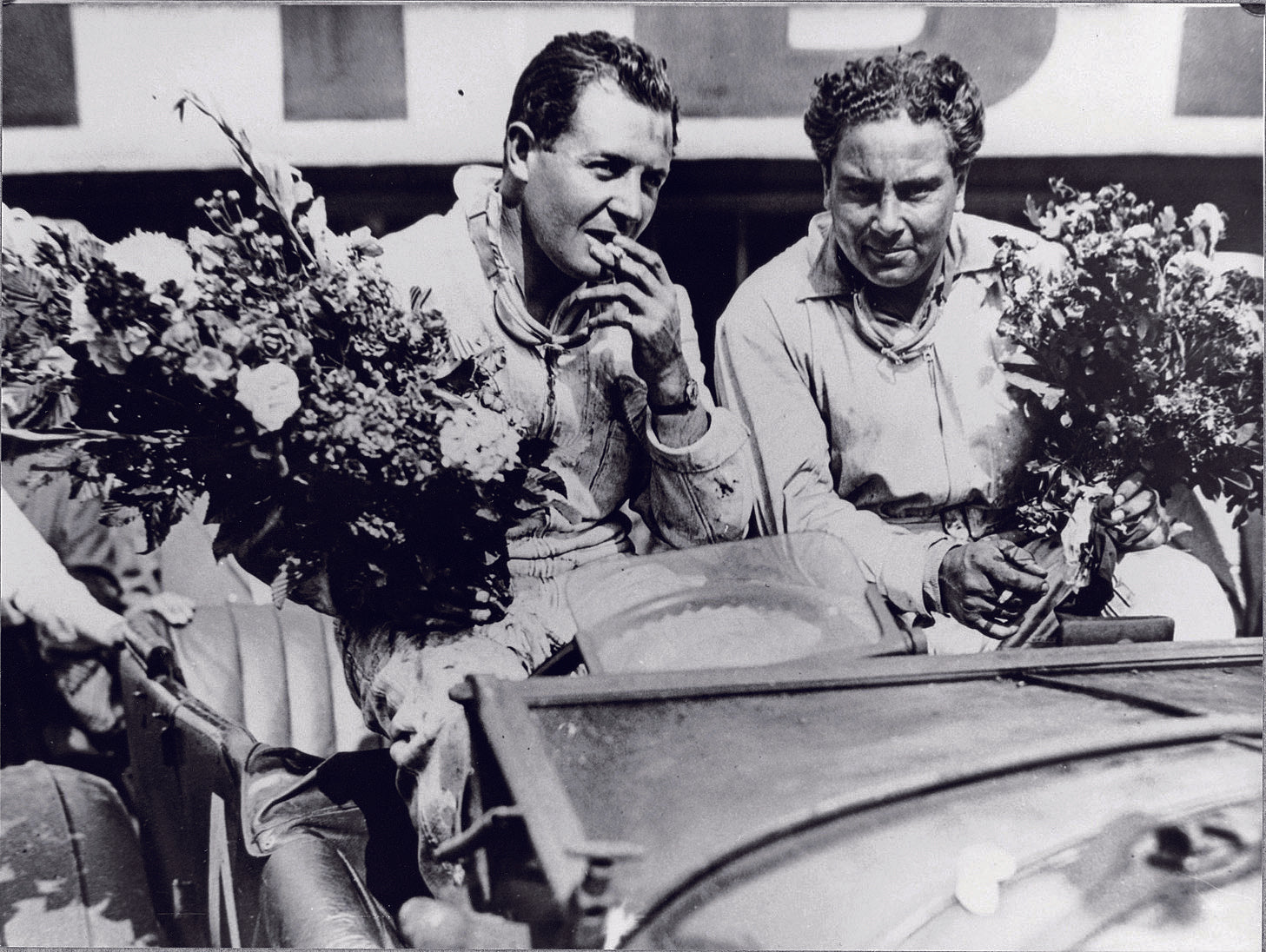
BENTLEY CHRONICLE PART1 : #006
BENTLEY CHRONICLE PART1
W.O. Bentley and the Bentley Boy Years #006
At Le Mans in 1929. Birkin's 'Old Number One', on its way to a first victory at the Pontlieue Hairpin, which had been converted into a shortcut that year (an element of the course that was completely discontinued in 1932).
■Dominating the Top Four Places, Winning for the Third Consecutive Year
The 1929 Le Mans was arguably the greatest race of all time for W.O. Bentley and the Bentley Boys. The Bentley works team, which had already established itself as an ally, included the latest 6 1/2-litre 6.6-cylinder 6 1/2-litre Speed Six, driven by the previous year's champions Barnato and Birkin, as well as the Glen Kidston / Jack Dunfee pair, the Dr Benjafield / Baron d’Erlanger pair, the Clement / Chassagne pair and another four 4 1/2 Litres driven by the previous year's champions, Bernard Rubin / Earl Howe, bringing the total number of entries to five. Their rivals this year were the Americans, including Stutz and Chrysler, which had gained momentum from their high rankings in the previous year's race.
Of these five Bentleys, only the number 11 Bentley of Rubin / Howe retired after just seven laps with dynamo problems, but the remaining four cars exhibited great speed and dominated the race. The speed of the Barnato / Birkin Speed Six in particular was of a completely different dimension, with Birkin setting the fastest lap of the year on the 18th one with a time of 7 minutes 7 seconds (average speed 137.929 km/h). In the end, he had run 2843.830 km/h by the finish line to take the overall win in definitive style. The three 4 1/2 Litres finished in second place, in the following order: the Kidston / Dunfee (driving in the third-year Old Mother Gun), Dr Benjafield / Baron d’Erlanger and Clement / Chassagne pairs. The Bentley works teams swept the top four places, a result truly worthy of the title of champions.
■Fifth Victory but Works Team Withdraws
The Bentley works team entered three Speed Sixes in the 1930 Le Mans race, having won a total of four races. Firstly, Barnato entered with Kidston in the Speed Six, the car he had won with the previous year, earning him the nickname 'Old Number One'. In addition, Frank Clement / Richard Watney and Sammy Davis / Clive Dunfee (Jack Dunfee's brother) also entered in works team Speed Six models.
However, this year at Le Mans, the Bentley works team had a new rival. The Bentley 4 1/2 Blower models, developed at the instigation of Tim Birkin and entered by a wealthy aristocrat, Miss Dorothy Paget. These models were of course also built by Bentley, but W.O. had to decline Miss Paget’s models to enter as part of the Bentley works team due to Bentley's finances being under considerable strain. Birkin therefore secured support from Miss Paget and managed to enter Le Mans with a two-car team consisting of Birkin / Chassagne and Dr Dudley Benjafield / Giulio Ramponi. However, Birkin's ambitions were to be dashed. Despite his best efforts ? he set the fastest lap time of 6:48 ? the engines of the two Blower Bentleys both encountered serious problems. They retired one after the other on Sunday afternoon.
However, Bentley's authority was upheld by two Speed Sixes, led by Old Number One. After a 10-hour battle with Rudolf Caracciola / Christian Werner in the Mercedes SS, Barnato / Kidston won the race for the fifth time for Bentley, with Clement / Watney in second place, adding to the ultimate glory for W.O. and the Bentley Boys. Barnato would go on to win all three Le Mans he took part in, an impressive record of overall victory, or a ‘100 percent win’ rate.
However, despite Bentley’s having reached the apex of its racing career, the company's chronic financial difficulties forced Chairman Barnato to make the decision to withdraw completely from racing as a works team in August of that year.
This is a revised version of an article that appeared in Flying B No 001 (2008). The information provided here was accurate at the time of publication.
Translation: Mako Ayabe and Michael Balderi






